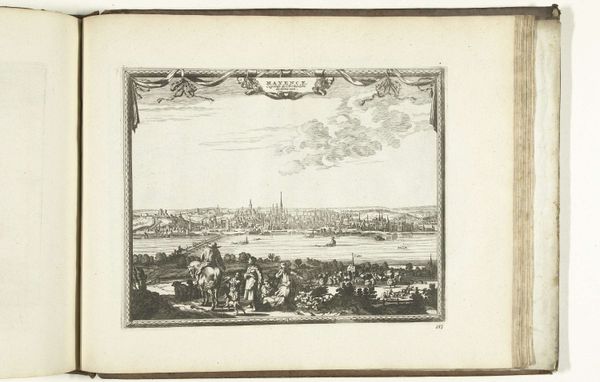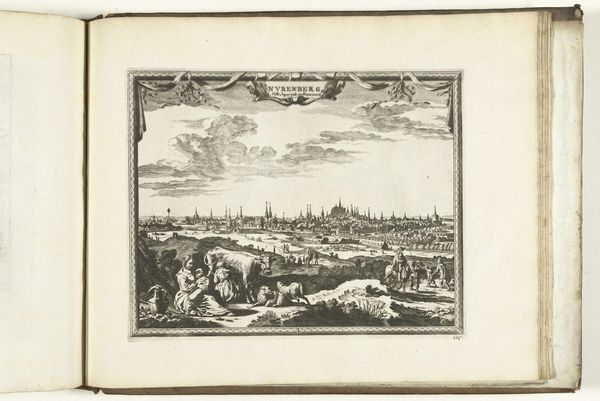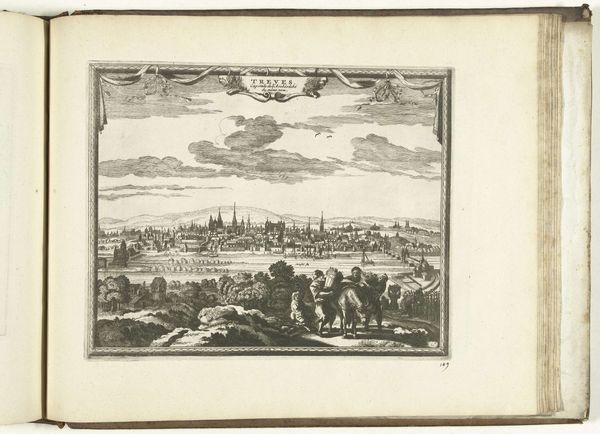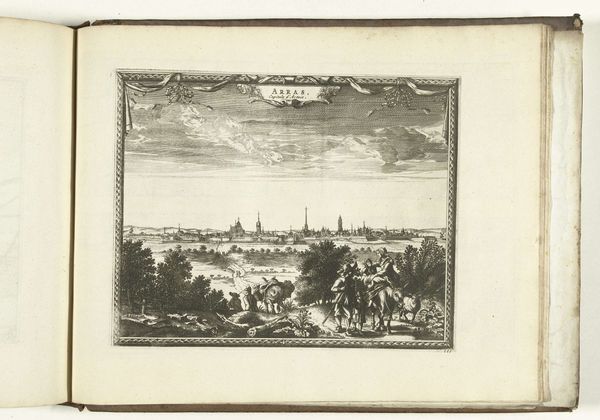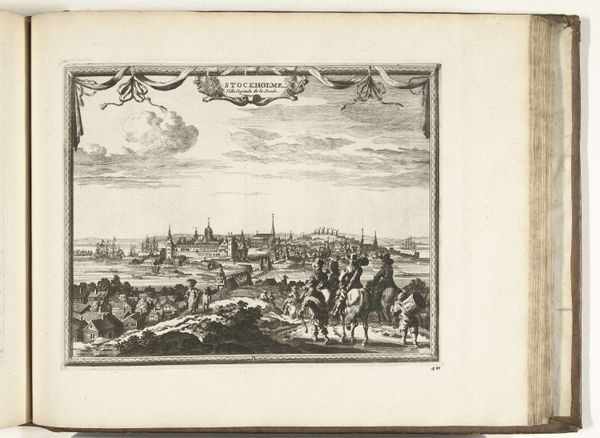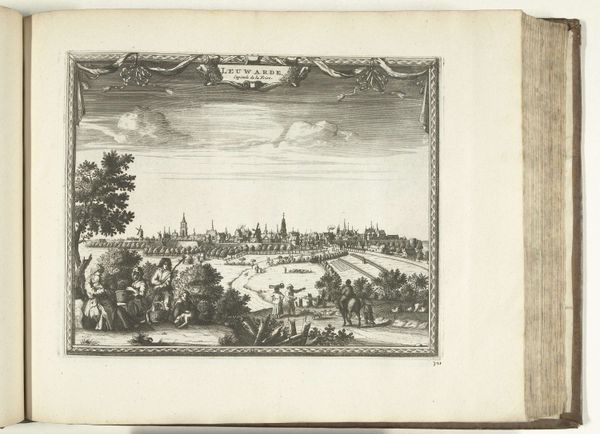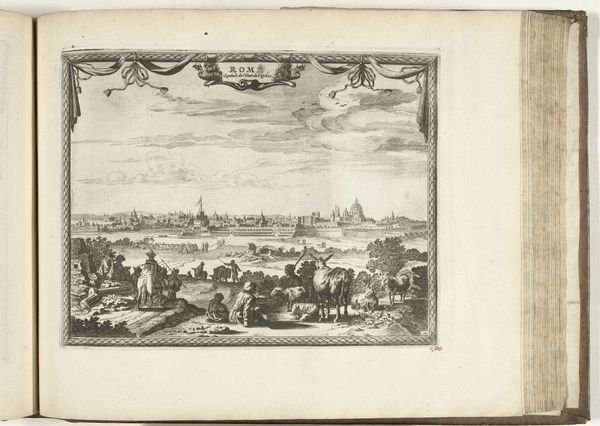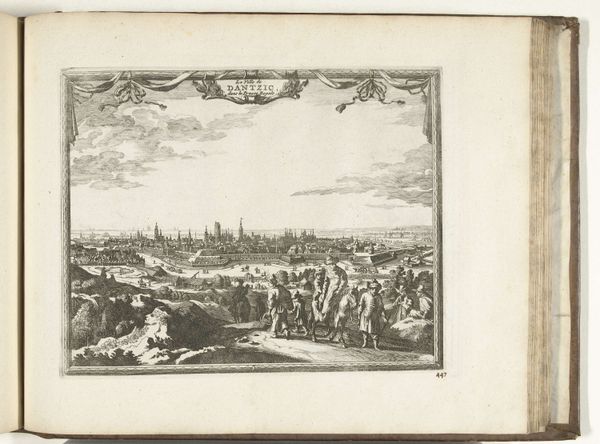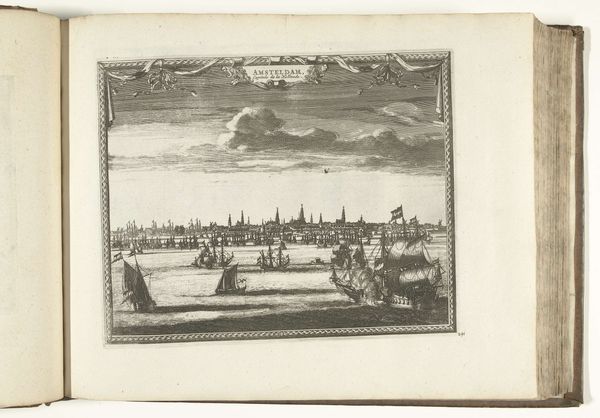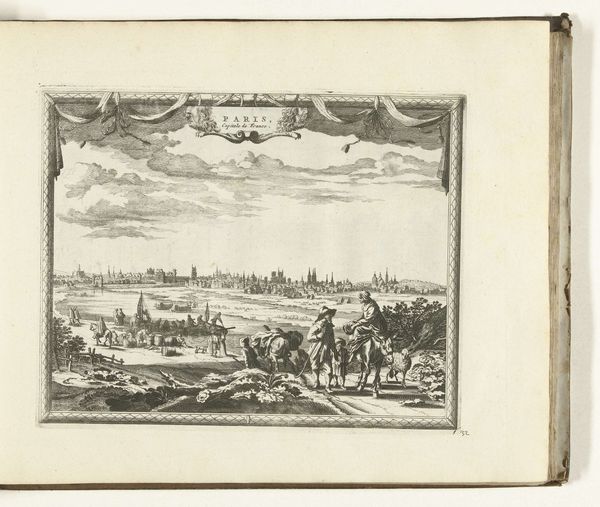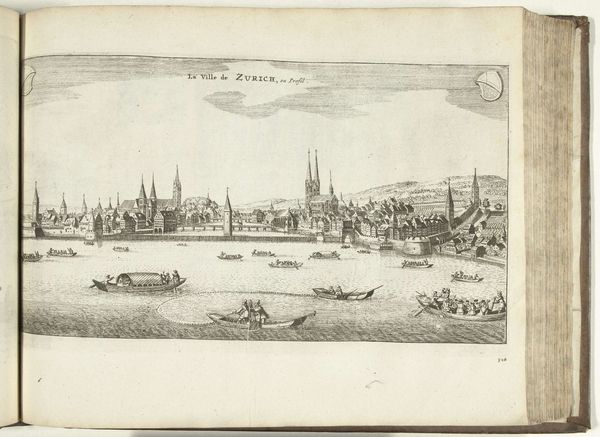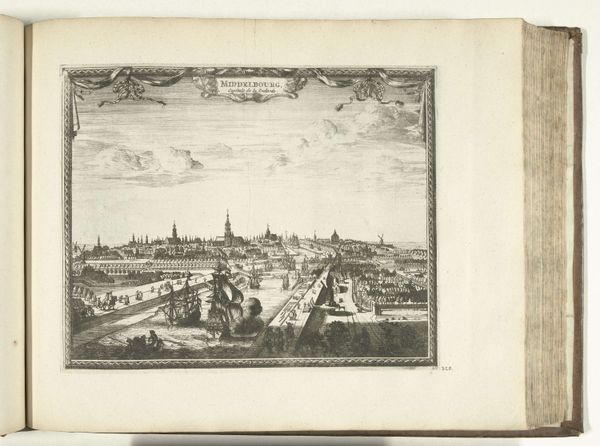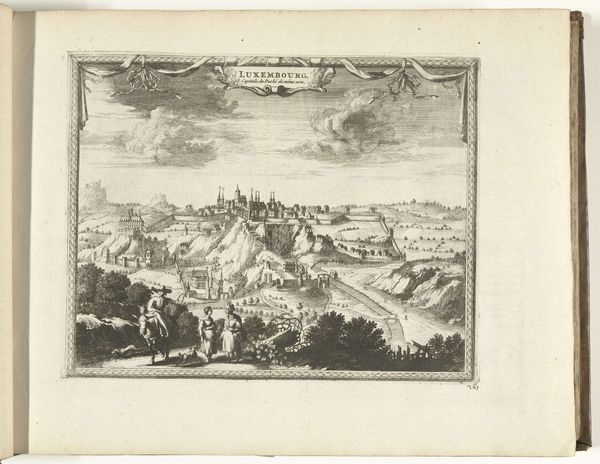
print, engraving
#
baroque
# print
#
landscape
#
cityscape
#
engraving
Dimensions: height 218 mm, width 274 mm
Copyright: Rijks Museum: Open Domain
Curator: This engaging print, entitled "Gezicht op Frankfurt am Main, 1726," offers a panoramic view of Frankfurt. It's an engraving by an anonymous artist, and currently resides here at the Rijksmuseum. Editor: The detail is remarkable, isn't it? Despite being a print, there’s an almost photographic quality to how the city emerges from the landscape, as though Frankfurt itself is being unveiled. The framing decorative elements soften the view a little too much for my liking, though. Curator: The cityscape theme, framed by the ornate Baroque style, positions Frankfurt as a key European center. Cityscapes were visual declarations of power and commerce, meant to broadcast influence and sophistication, don’t you think? I'm reminded of other printed city views from this period and the symbolic resonance each had to the ambitions of their ruling entities. Editor: Precisely, though that begs the question: Whose ambition are we looking at here? Was this intended as a simple representation, or perhaps an endorsement? It makes me think about the rise of the merchant class and urban centers like Frankfurt in challenging feudal systems. Was the "artist" truly anonymous, or effaced deliberately, perhaps for political reasons? Curator: Well, there is that feeling that all details contribute to an iconographic representation. Look closely, and you might be able to discern signs related to Frankfurt as a commercial centre. The choice of engraving itself as a medium carries symbolism; prints could be disseminated easily, furthering that declaration to a wide audience. Editor: Yet even with the intention, its visual vocabulary, whether celebratory or cautious, doesn't resonate with me today. We're so conditioned now by image bombardment that I think viewers might find such formality staged and a little distancing, a contrast with gritty and unflinching street photography of later eras. How do we, or could we, engage with historical representations such as this one on an emotive level today? Curator: Perhaps it's about understanding how visual codes have shifted over time and reflecting on which cultural memories such historical documents once hoped to inspire and imprint, no? Editor: Possibly so. But it’s a helpful reminder that representation always comes with perspective.
Comments
No comments
Be the first to comment and join the conversation on the ultimate creative platform.
